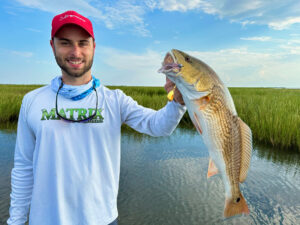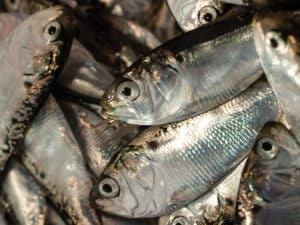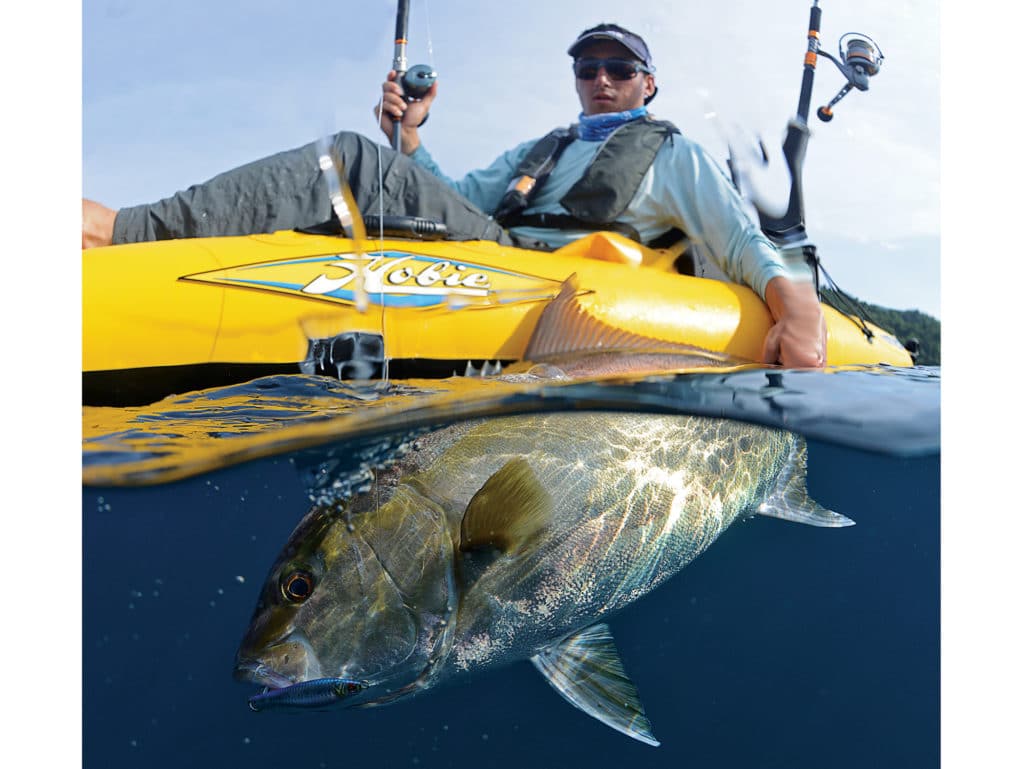
Anything Can Happen
Two experiences on a kayak trip years ago helped me understand the importance of personal safety and fighting technique when targeting large fish. After playing out a little tunny to my ’yak, two hefty bull sharks raced up to my flailing fish and chomped on it as I watched helplessly. With a line-cutting tool, I could have slashed the leader and not risked being pulled into the blood-soaked seawater. Instead, without the tool, I was at the sharks’ mercy in a dangerous position that should have been avoided. Later that morning I learned quickly to keep sizable fish out in front of me and away from the boat. Trolling an Atlantic bumper, I hooked a 5-foot tarpon that weighed more than my kayak. The fish immediately went into a fit of leaps, only narrowly missing my vessel after a particular jump. While kayakers should always learn from experience, as I did, they can avoid some of the hassle and headaches by listening to what kayak pros recommend when targeting full-size game fish. Dealing with tackle, techniques and safety is all part of the learning curve when targeting full-size game fish.
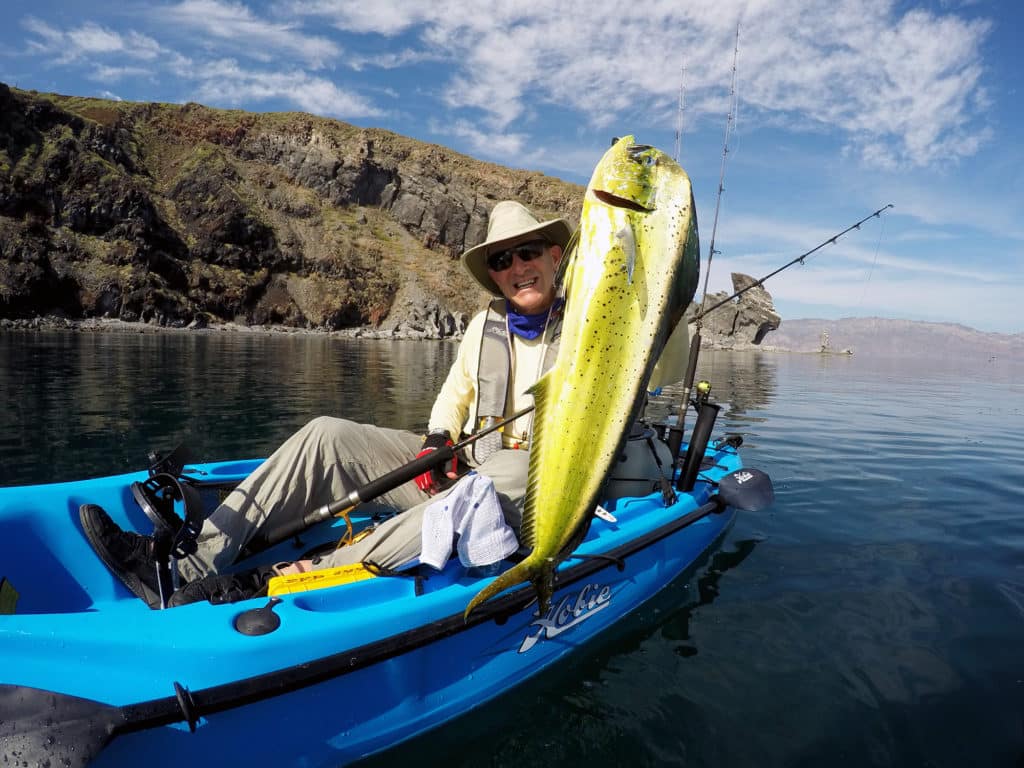
Get Situated
Kayak-fishing techniques are as numerous as no-see-ums, but some simple rigs translate across most fisheries. “For most pelagics, I have two live-bait rods with stinger rigs and one jigging rod,” says Hobie pro staffer Brian Nelli, of Pushin’ Water Kayak Charters in Palm Beach, Florida. “One rod is used as a flat line, and the other goes deep.” There’s not much room in a kayak for tackle, except for a small box for hooks, plugs, weights and extra jigs. Targeting specific species allows a kayaker to specialize with gear that ranges from 20- to 100-pound tackle.
Fighting a big fish isn’t easy from a plastic boat the size of a bobsled. Always keep the fish away from the kayak, off the bow, if it’s fighting at or near the surface. Marlin, sailfish, dorado, tarpon and even sharks could jump right into your lap! If a fish is straight up and down, kayakers must put pressure on the fish to bring it up. But too much drag pressure with the rod held out amidships, coupled with a pulled hook, could topple the angler overboard.
“Many kayakers fight the fish way too long and then can’t revive their catch,” Nelli says. “Just don’t bring the fish in so green that it’s dangerous to the kayaker. Plus, have hand protection and get a good grip to hold a tail or mouth.”
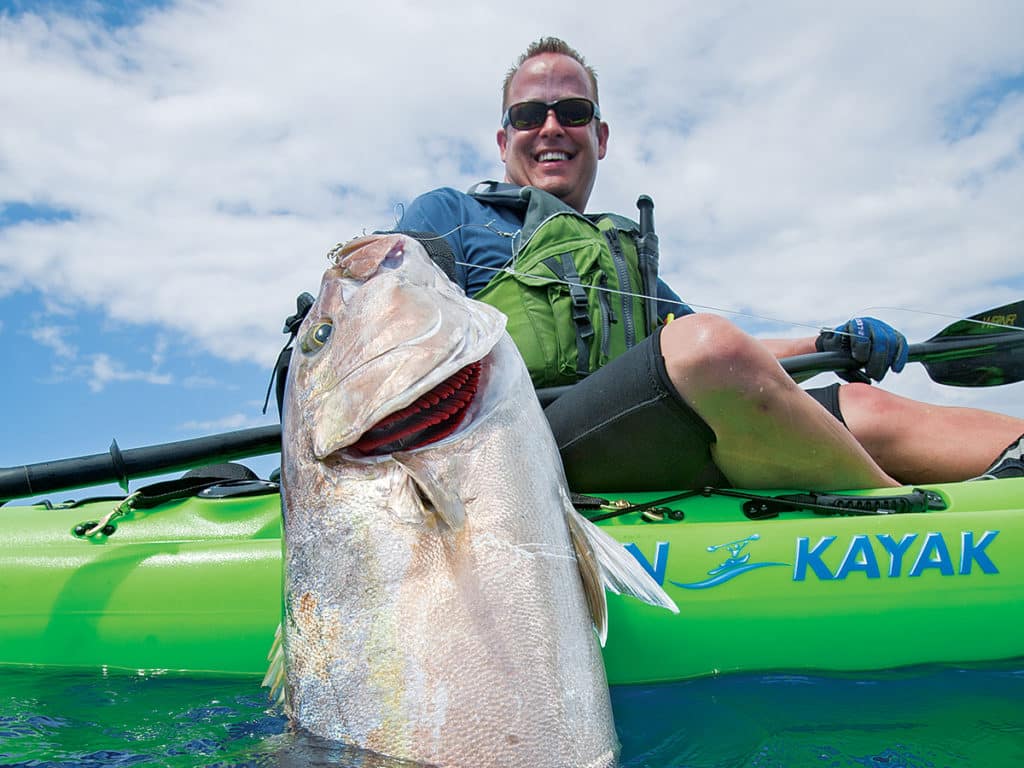
Handling Your Catch
Rob Wong Yuen, an Ocean Kayaks pro staffer, fishes Hawaii’s offshore waters most days in his Ocean Kayak Trident 15. In fact, he can rightfully tell you that 100-pound yellowfin tuna fight harder from his kayak than 150-pound black marlin. Whether it’s wahoo, tuna or marlin, Wong Yuen handles big fish from his ‘yak consistently.
“I keep most of my fish,” he says, “so when they get close enough, I’ll hit ’em with a Hawaiian spear gaff to the brain.” Then he uses a traditional gaff to pull the lifeless fish into the kayak, but that extra weight is tricky.
“I can slide fish under 90 pounds into the kayak’s hull, but anything bigger needs to get tied with a rope,” Wong Yuen says. “Get ready for that extra weight in the kayak, and make sure to keep your balance as you shift your weight to account for the heavy fish.”
Big fish require Wong Yuen to head to shore immediately, specifically to preserve the meat. “Make sure the deck is clear before bringing a fish aboard; even a dead tuna can twitch,” he points out. “If I’m more than 5 miles offshore, the fish has to go in a fish bag. Otherwise, I’ll throw a wet shirt on top of the fish and head back.”
No matter if you keep your catch or release it, know what it takes to safely target hefty fish in ever-changing, wide-open conditions.
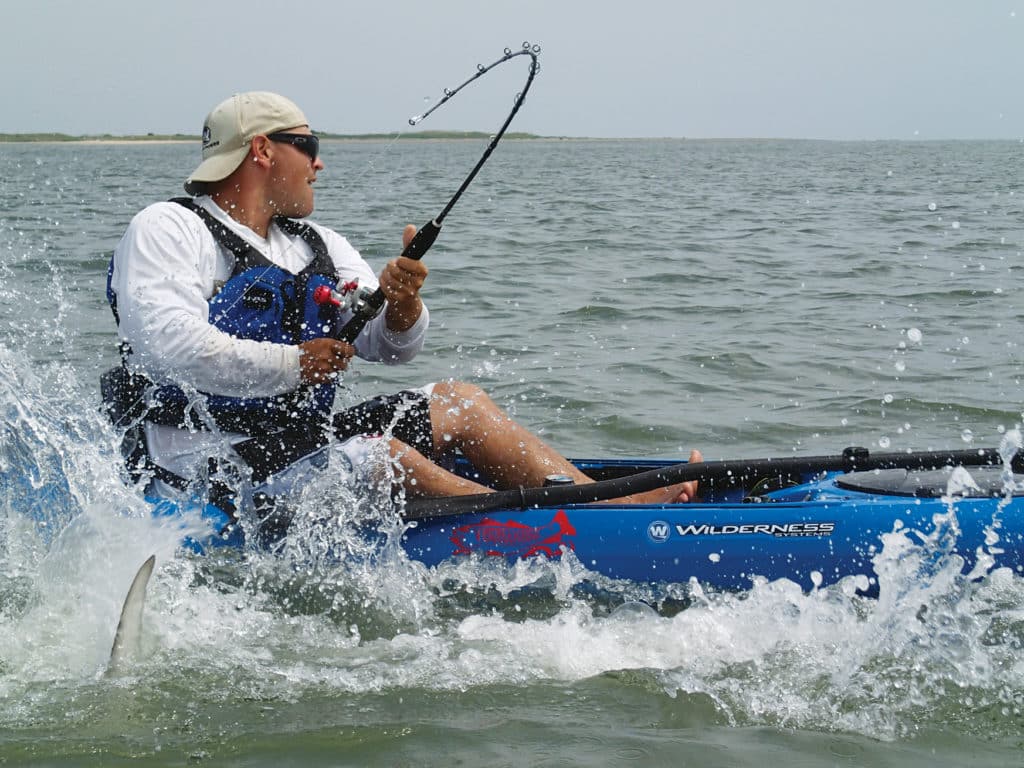
Stable Platforms
Numerous kayak manufacturers make efficient fishing platforms with plenty of unique features, but almost all fishing kayak models are self-bailing, with scupper holes that drain water out of the cockpit.
“Modern fishing kayaks are built for stability, to handle substantial weight capacities, and to be extremely durable,” says Virginia Beach’s John Oast, creator of fishyaker.com and a Johnson Outdoors pro staffer. “There is a chance that a large fish could overturn a kayak, but many recent kayak models are designed for stand-up fishing, so they’re tough to capsize.”
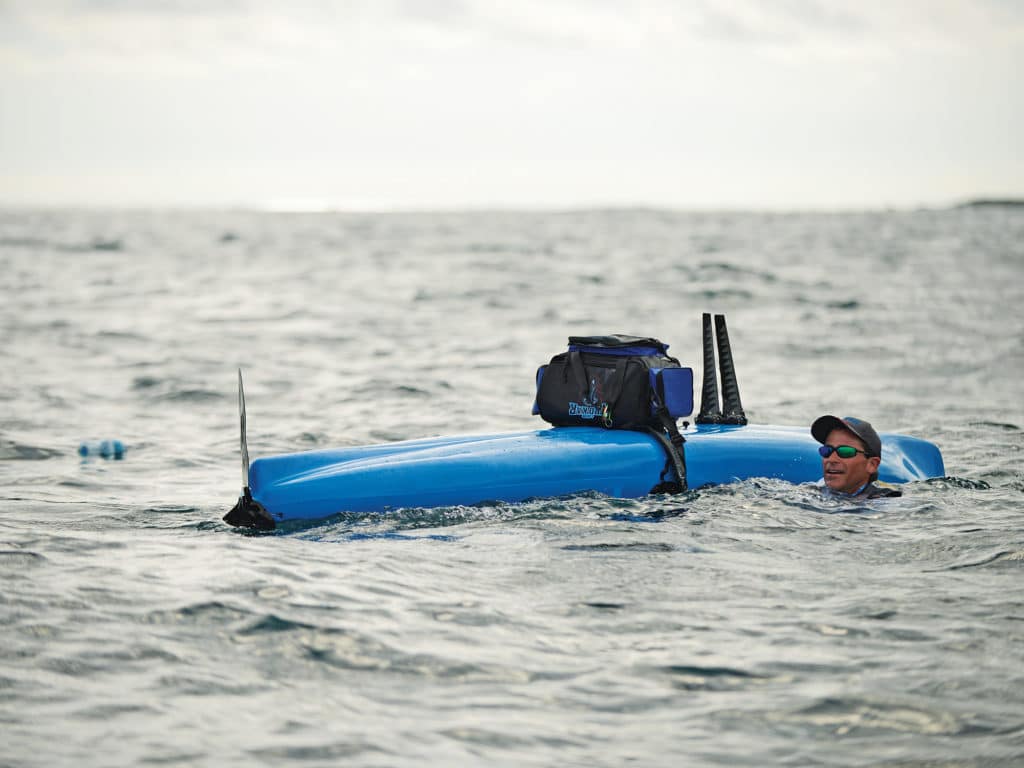
Flip Factor
A kayak angler is most likely to dump over at a surf launch or re-entry. Be proactive by tying down accessories to the kayak, and place gear inside hatches. Don’t let the beach area become a yard sale, jokes kayaker John Oast.
“Before heading into the waves, take a few minutes to watch the wave patterns — look for sandbars, rip currents and wave-set frequencies,” he says. “There might be a better spot to launch just up or down the beach a short distance.”
When launching, always hit the swells straight-on and paddle as fast as you can. On the way in, time your return with the wave set, and keep the hull straight. “I even know some kayak anglers who return to shore facing open water, paddling backward,” Oast says, “so they can hit the inbound waves head-on and paddle in reverse between them.”
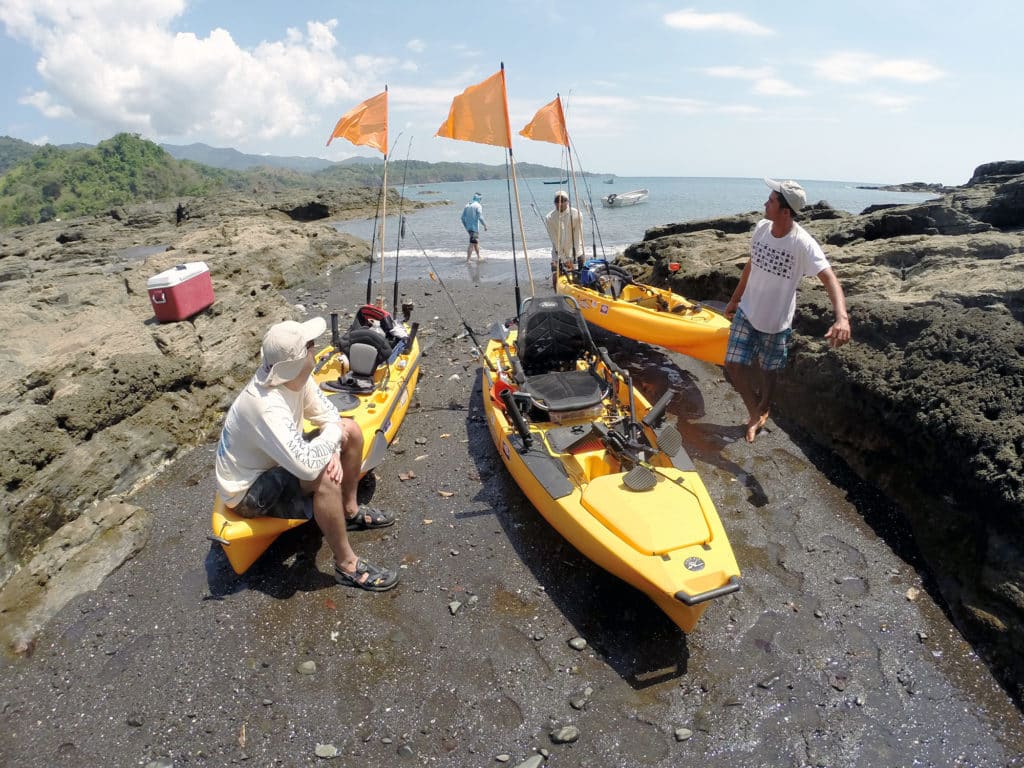
Kayakers must take all precautions, just like boaters, when it comes to safety gear. Vital gear includes but is not limited to a personal locator beacon (if out of cellphone range), VHF radio (to talk to buddy boats), personal flotation device, loud whistle and GPS unit. Always pack bottles of water, plus snacks like granola, fruit or protein bars to stay energized.
“My most important items on trips are a dive knife and hand-held flares,” says Rob Alderman, a Wilderness Systems pro staffer, and operator of Outer Banks Kayak Fishing. “I strap my dive knife to the inside of my left leg in case I flip and get caught up in line. Flares are the best choice for signaling for help, better than a cellphone that can have spotty connection.”
Aside from a flag on a tall pole, a bright-colored kayak and paddle help powerboaters to spot kayakers. “If a boat is cranking toward you, hold your paddle above your head and flail it around to get their attention,” says Oast. “Unfortunately, when under power, they probably won’t hear your whistle.”



